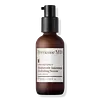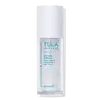What's inside
What's inside
 Key Ingredients
Key Ingredients

 Benefits
Benefits

 Concerns
Concerns

 Ingredients Side-by-side
Ingredients Side-by-side

Water
Skin ConditioningDimethicone
EmollientButylene Glycol
HumectantNiacinamide
SmoothingAcetyl Glucosamine
Skin ConditioningSqualane
EmollientSodium Acrylate/Sodium Acryloyldimethyl Taurate Copolymer
Emulsion StabilisingPolysilicone-11
Cetearyl Olivate
Hdi/Trimethylol Hexyllactone Crosspolymer
Polyisobutene
Sorbitan Olivate
EmulsifyingDimethyl Isosorbide
SolventPolysorbate 20
Emulsifying1,2-Hexanediol
Skin ConditioningCaprylyl Glycol
EmollientDimethyl Mea
BufferingHydroxyacetophenone
AntioxidantCitric Acid
BufferingCeramide NP
Skin ConditioningCaprylyl/Capryl Glucoside
CleansingSorbitan Oleate
EmulsifyingSodium Gluconate
Skin ConditioningSpermidine
AntioxidantSilica
AbrasiveSodium Acetylated Hyaluronate
HumectantSodium Hyaluronate
HumectantPhenoxyethanol
PreservativePhytosphingosine
Skin ConditioningSodium Hyaluronate Crosspolymer
HumectantHyaluronic Acid
HumectantEthylhexylglycerin
Skin ConditioningAcetyl Tetrapeptide-11
Skin ConditioningAcetyl Tetrapeptide-9
Skin ConditioningGlycerin
HumectantDisodium Acetyl Glucosamine Phosphate
Skin ConditioningSodium Glucuronate
HumectantMagnesium Sulfate
Water, Dimethicone, Butylene Glycol, Niacinamide, Acetyl Glucosamine, Squalane, Sodium Acrylate/Sodium Acryloyldimethyl Taurate Copolymer, Polysilicone-11, Cetearyl Olivate, Hdi/Trimethylol Hexyllactone Crosspolymer, Polyisobutene, Sorbitan Olivate, Dimethyl Isosorbide, Polysorbate 20, 1,2-Hexanediol, Caprylyl Glycol, Dimethyl Mea, Hydroxyacetophenone, Citric Acid, Ceramide NP, Caprylyl/Capryl Glucoside, Sorbitan Oleate, Sodium Gluconate, Spermidine, Silica, Sodium Acetylated Hyaluronate, Sodium Hyaluronate, Phenoxyethanol, Phytosphingosine, Sodium Hyaluronate Crosspolymer, Hyaluronic Acid, Ethylhexylglycerin, Acetyl Tetrapeptide-11, Acetyl Tetrapeptide-9, Glycerin, Disodium Acetyl Glucosamine Phosphate, Sodium Glucuronate, Magnesium Sulfate
Water
Skin ConditioningDipentaerythrityl Hexacaprylate/Hexacaprate
EmulsifyingPentaerythrityl Tetraisostearate
EmollientIsononyl Isononanoate
EmollientPropanediol
SolventGlycerin
HumectantCaprylic/Capric Triglyceride
MaskingSodium Hyaluronate
HumectantHydrolyzed Hyaluronic Acid
HumectantSodium Hyaluronate Crosspolymer
HumectantHydrolyzed Sodium Hyaluronate
Skin ConditioningSodium Acetylated Hyaluronate
HumectantSodium Polyglutamate
HumectantSqualane
EmollientCollagen
MoisturisingLactococcus Ferment Lysate
Skin ConditioningLactobacillus Ferment
Skin ConditioningLactobacillus
Skin ConditioningBeta Vulgaris Root Extract
Skin ConditioningCurcuma Longa Root Extract
MaskingPyrus Malus Fruit Extract
Skin ConditioningCitrullus Lanatus Fruit Extract
Skin ConditioningVaccinium Angustifolium Fruit Extract
Skin ProtectingLens Esculenta Fruit Extract
Skin ConditioningHydrolyzed Rice Protein
Skin ConditioningInulin
Skin ConditioningAlpha-Glucan Oligosaccharide
CleansingLactic Acid
BufferingSodium PCA
HumectantHydrogenated Poly(C6-20 Olefin)
AbrasiveHydroxyacetophenone
AntioxidantLeuconostoc/Radish Root Ferment Filtrate
AntimicrobialPolymnia Sonchifolia Root Juice
Skin ConditioningRhus Verniciflua Peel Wax
Caprylyl Glycol
EmollientSodium Lactate
BufferingCarrageenan
Pentylene Glycol
Skin ConditioningMaltodextrin
AbsorbentButylene Glycol
HumectantSodium Chloride
MaskingEthylhexylglycerin
Skin Conditioning1,2-Hexanediol
Skin ConditioningAcrylates/C10-30 Alkyl Acrylate Crosspolymer
Emulsion StabilisingTromethamine
BufferingHdi/Trimethylol Hexyllactone Crosspolymer
Sodium Benzoate
MaskingPotassium Sorbate
PreservativeWater, Dipentaerythrityl Hexacaprylate/Hexacaprate, Pentaerythrityl Tetraisostearate, Isononyl Isononanoate, Propanediol, Glycerin, Caprylic/Capric Triglyceride, Sodium Hyaluronate, Hydrolyzed Hyaluronic Acid, Sodium Hyaluronate Crosspolymer, Hydrolyzed Sodium Hyaluronate, Sodium Acetylated Hyaluronate, Sodium Polyglutamate, Squalane, Collagen, Lactococcus Ferment Lysate, Lactobacillus Ferment, Lactobacillus, Beta Vulgaris Root Extract, Curcuma Longa Root Extract, Pyrus Malus Fruit Extract, Citrullus Lanatus Fruit Extract, Vaccinium Angustifolium Fruit Extract, Lens Esculenta Fruit Extract, Hydrolyzed Rice Protein, Inulin, Alpha-Glucan Oligosaccharide, Lactic Acid, Sodium PCA, Hydrogenated Poly(C6-20 Olefin), Hydroxyacetophenone, Leuconostoc/Radish Root Ferment Filtrate, Polymnia Sonchifolia Root Juice, Rhus Verniciflua Peel Wax, Caprylyl Glycol, Sodium Lactate, Carrageenan, Pentylene Glycol, Maltodextrin, Butylene Glycol, Sodium Chloride, Ethylhexylglycerin, 1,2-Hexanediol, Acrylates/C10-30 Alkyl Acrylate Crosspolymer, Tromethamine, Hdi/Trimethylol Hexyllactone Crosspolymer, Sodium Benzoate, Potassium Sorbate
Ingredients Explained
These ingredients are found in both products.
Ingredients higher up in an ingredient list are typically present in a larger amount.
1,2-Hexanediol is a synthetic liquid and another multi-functional powerhouse.
It is a:
- Humectant, drawing moisture into the skin
- Emollient, helping to soften skin
- Solvent, dispersing and stabilizing formulas
- Preservative booster, enhancing the antimicrobial activity of other preservatives
Butylene Glycol (or BG) is used within cosmetic products for a few different reasons:
Overall, Butylene Glycol is a safe and well-rounded ingredient that works well with other ingredients.
Though this ingredient works well with most skin types, some people with sensitive skin may experience a reaction such as allergic rashes, closed comedones, or itchiness.
Learn more about Butylene GlycolCaprylyl Glycol is a humectant and emollient, meaning it attracts and preserves moisture.
It is a common ingredient in many products, especially those designed to hydrate skin. The primary benefits are retaining moisture, skin softening, and promoting a healthy skin barrier.
Though Caprylyl Glycol is an alcohol derived from fatty acids, it is not the kind that can dry out skin.
This ingredient is also used as a preservative to extend the life of products. It has slight antimicrobial properties.
Learn more about Caprylyl GlycolEthylhexylglycerin (we can't pronounce this either) is commonly used as a preservative and skin softener. It is derived from glyceryl.
You might see Ethylhexylglycerin often paired with other preservatives such as phenoxyethanol. Ethylhexylglycerin has been found to increase the effectiveness of these other preservatives.
Glycerin is already naturally found in your skin. It helps moisturize and protect your skin.
A study from 2016 found glycerin to be more effective as a humectant than AHAs and hyaluronic acid.
As a humectant, it helps the skin stay hydrated by pulling moisture to your skin. The low molecular weight of glycerin allows it to pull moisture into the deeper layers of your skin.
Hydrated skin improves your skin barrier; Your skin barrier helps protect against irritants and bacteria.
Glycerin has also been found to have antimicrobial and antiviral properties. Due to these properties, glycerin is often used in wound and burn treatments.
In cosmetics, glycerin is usually derived from plants such as soybean or palm. However, it can also be sourced from animals, such as tallow or animal fat.
This ingredient is organic, colorless, odorless, and non-toxic.
Glycerin is the name for this ingredient in American English. British English uses Glycerol/Glycerine.
Learn more about GlycerinThis ingredient is a powder used to improve texture, slip, and give products a silky texture.
Hydroxyacetophenone is antioxidant with skin conditioning and soothing properties. It also boosts the efficiency of preservatives.
This ingredient is not irritating or sensitizing.
Sodium Acetylated Hyaluronate is a type of Hyaluronic Acid.
Hyaluronic Acids help moisturize, soothe, and protect the skin.
Read about common types of Hyaluronic Acid here:
Sodium Hyaluronate
Hydrolyzed Hyaluronic Acid
Hyaluronic Acid
Sodium Hyaluronate is hyaluronic acid's salt form. It is commonly derived from the sodium salt of hyaluronic acid.
Like hyaluronic acid, it is great at holding water and acts as a humectant. This makes it a great skin hydrating ingredient.
Sodium Hyaluronate is naturally occurring in our bodies and is mostly found in eye fluid and joints.
These are some other common types of Hyaluronic Acid:
Learn more about Sodium HyaluronateSodium Hyaluronate Crosspolymer is a type of hyaluronic acid. In fact, it is modified version of hyaluronic acid.
The structure of Sodium Hyaluronate Crosspolymer allows it to stay in the skin's top layer for a longer period of time. This allows for even more hydration and humectant action than hyaluronic acid.
These are some other common types of Hyaluronic Acid:
Learn more about Sodium Hyaluronate CrosspolymerSqualane is an emollient that helps the skin hold onto moisture. It's an oily liquid that occurs naturally in certain types of fish and plant oils.
Because squalane boosts hydration in the skin, it also comes with plenty of benefits: it is an antioxidant and can help fight free radicals and skin damage. Squalane is also found to have a detoxifying effect when applied.
Squalane comes from squalene, which occurs naturally within the sebum of our skin. It is one of the oils our skin produces to keep itself hydrated. Squalane is the hydrogenated version of squalene and has a longer shelf life.
Research shows that squalane is non-irritating (even at 100% concentration).
In general, it's a fantastic ingredient. It does a great job at hydrating the skin, and it's suitable for those with sensitive skin.
The source of squalane may impact malassezia / fungal acne. This is because olive oil derived squalane can contain impurities such as fatty acids and plant waxes. Sugarcane derived squalane is recommended for anyone with malassezia concerns.
Is squalane vegan?
This depends on the source. Squalane can be derived from both plants and animals. Most squalane used in skincare comes from plants.
Please note: the source of squalane is only known if disclosed by the brand. We recommend reaching out to the brand if you have any questions about their squalane.
Read more about squalene with an "e".
Is squalane an oil?
Squalane is often called an oil, but it’s technically not; it’s a hydrocarbon, meaning it’s only made of carbon and hydrogen, unlike true oils which are triglycerides made of fatty acids and glycerol.
The term “oil-free” isn’t regulated, so companies can define it however they want. Some exclude all oils, while others just avoid mineral oil or comedogenic oils.
While some people avoid oils thinking they cause breakouts, the right kind of oil (or oil-like ingredient like squalane) can actually help balance and hydrate your skin. It’s worth testing out simple oils or squalane to see what works best for your skin.
Learn more about SqualaneWater. It's the most common cosmetic ingredient of all. You'll usually see it at the top of ingredient lists, meaning that it makes up the largest part of the product.
So why is it so popular? Water most often acts as a solvent - this means that it helps dissolve other ingredients into the formulation.
You'll also recognize water as that liquid we all need to stay alive. If you see this, drink a glass of water. Stay hydrated!
Learn more about Water